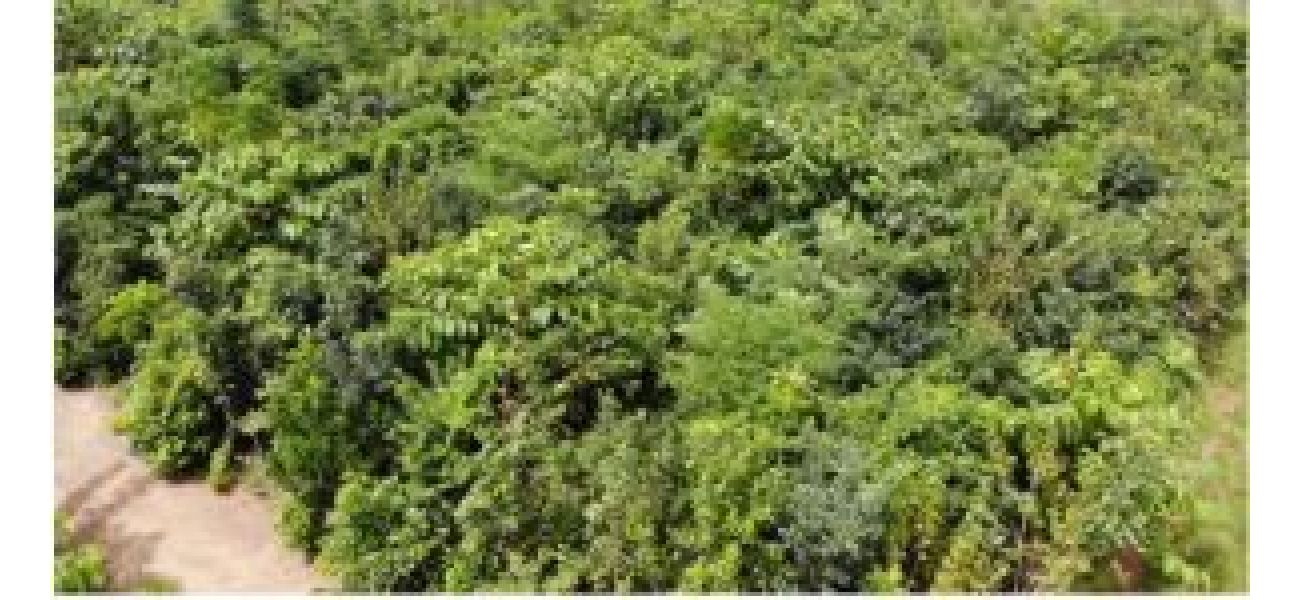Govt report states Odisha gained 559 sq km of forest and tree cover between 2021-2023.
Odisha's forest and tree cover increased by 559 sq km from 2021 to 2023, as reported in the 2023 India State of Forest Report (ISFR).
December 21st 2024.

The India State of Forest Report 2023, released on Saturday, revealed that Odisha has made significant progress in increasing its forest and tree cover. In just two years, from 2021 to 2023, the state added 559 sq km of combined forest and tree cover, with a rise of 152 sq km in forest cover alone. This growth is a part of India's efforts to meet the Paris Agreement goals, with a commitment to create an additional carbon sink of 2.5 to 3 billion tonnes through additional forest and tree cover by 2030.
The report also highlighted the national achievement of an additional carbon sink of 2.29 billion tonnes compared to 2005 levels. This is a significant step towards the country's climate plans and Nationally Determined Contributions. As of 2023, India's total forest cover stands at 7,15,343 sq km, which makes up 21.76% of the country's geographical area. The tree cover has also shown growth, with an increase of 1,289 sq km, now accounting for 3.41% of the country's geographical area. Together, the forest and tree cover make up 8,27,357 sq km or 25.17% of India's geographical area, marking an overall increase of 1,445 sq km from 2021.
According to the Forest Survey of India, forest cover refers to all land with a tree canopy density of more than 10%, spanning over an area of one hectare or more. This definition includes natural forests, as well as man-made plantations, orchards, and tree patches in both urban and rural areas. On the other hand, tree cover is defined as patches of trees and isolated trees outside the Reserved Forest Area, which are less than one hectare in size.
Environment Minister Bhupender Yadav expressed his appreciation for the report's most positive finding, which is the additional carbon sink created by India compared to 2005 levels. The country's carbon stock in 2023 is estimated at 7,285.5 million tonnes, an increase of 81.5 million tonnes from 2021. By 2030, India is expected to have 31.71 billion tonnes of carbon stock in forest and tree cover.
The report also highlighted the inclusion of bamboo cover in the tree cover assessment. As of 2023, India's total bamboo-bearing area stands at 1,54,670 sq km, showing an increase of 5,227 sq km from 2021. Among states, Chhattisgarh, Uttar Pradesh, Odisha, and Rajasthan recorded the highest increases in combined forest and tree cover. For forest cover alone, the largest gains were seen in Mizoram, Gujarat, and Odisha.
In terms of total area, Madhya Pradesh leads with the largest forest and tree cover, followed by Arunachal Pradesh and Maharashtra. In the forest cover category, Madhya Pradesh remains on top, followed by Arunachal Pradesh and Chhattisgarh. When considering forest cover as a percentage of the geographical area, Lakshadweep ranks first, followed by Mizoram and Andaman & Nicobar Islands.
The report also analyzed forest cover changes in the Western Ghats and Eastern States Area over the past decade and found an overall loss of 58.22 sq km in forest cover. However, there has been an increase of 3,465.12 sq km in very dense forests, while moderately dense forests and open forests have experienced declines of 1,043.23 sq km and 2,480.11 sq km, respectively. In the hill districts, the forest cover has increased by 234.14 sq km, making up 40% of the total geographical area of these districts.
The report also mentioned that Odisha's government has felled 26.75 lakh trees for 482 projects from 2000 to 2023. However, there has been a decrease of 327.30 sq km in forest cover in the northeastern region. The total forest and tree cover in the region stands at 1,74,394.70 sq km, accounting for 67% of the region's geographical area. India's total mangrove cover stands at 4,991.68 sq km, with a net decrease of 7.43 sq km since 2021.
The Forest Survey of India has been assessing forest cover since 1987 and tree cover since 2001. The National Forest Policy 1988 mandates that 33% of the geographical area of India should be under forest or tree cover. With the steady increase in forest and tree cover, India is on the right track towards achieving this goal.
The report also highlighted the national achievement of an additional carbon sink of 2.29 billion tonnes compared to 2005 levels. This is a significant step towards the country's climate plans and Nationally Determined Contributions. As of 2023, India's total forest cover stands at 7,15,343 sq km, which makes up 21.76% of the country's geographical area. The tree cover has also shown growth, with an increase of 1,289 sq km, now accounting for 3.41% of the country's geographical area. Together, the forest and tree cover make up 8,27,357 sq km or 25.17% of India's geographical area, marking an overall increase of 1,445 sq km from 2021.
According to the Forest Survey of India, forest cover refers to all land with a tree canopy density of more than 10%, spanning over an area of one hectare or more. This definition includes natural forests, as well as man-made plantations, orchards, and tree patches in both urban and rural areas. On the other hand, tree cover is defined as patches of trees and isolated trees outside the Reserved Forest Area, which are less than one hectare in size.
Environment Minister Bhupender Yadav expressed his appreciation for the report's most positive finding, which is the additional carbon sink created by India compared to 2005 levels. The country's carbon stock in 2023 is estimated at 7,285.5 million tonnes, an increase of 81.5 million tonnes from 2021. By 2030, India is expected to have 31.71 billion tonnes of carbon stock in forest and tree cover.
The report also highlighted the inclusion of bamboo cover in the tree cover assessment. As of 2023, India's total bamboo-bearing area stands at 1,54,670 sq km, showing an increase of 5,227 sq km from 2021. Among states, Chhattisgarh, Uttar Pradesh, Odisha, and Rajasthan recorded the highest increases in combined forest and tree cover. For forest cover alone, the largest gains were seen in Mizoram, Gujarat, and Odisha.
In terms of total area, Madhya Pradesh leads with the largest forest and tree cover, followed by Arunachal Pradesh and Maharashtra. In the forest cover category, Madhya Pradesh remains on top, followed by Arunachal Pradesh and Chhattisgarh. When considering forest cover as a percentage of the geographical area, Lakshadweep ranks first, followed by Mizoram and Andaman & Nicobar Islands.
The report also analyzed forest cover changes in the Western Ghats and Eastern States Area over the past decade and found an overall loss of 58.22 sq km in forest cover. However, there has been an increase of 3,465.12 sq km in very dense forests, while moderately dense forests and open forests have experienced declines of 1,043.23 sq km and 2,480.11 sq km, respectively. In the hill districts, the forest cover has increased by 234.14 sq km, making up 40% of the total geographical area of these districts.
The report also mentioned that Odisha's government has felled 26.75 lakh trees for 482 projects from 2000 to 2023. However, there has been a decrease of 327.30 sq km in forest cover in the northeastern region. The total forest and tree cover in the region stands at 1,74,394.70 sq km, accounting for 67% of the region's geographical area. India's total mangrove cover stands at 4,991.68 sq km, with a net decrease of 7.43 sq km since 2021.
The Forest Survey of India has been assessing forest cover since 1987 and tree cover since 2001. The National Forest Policy 1988 mandates that 33% of the geographical area of India should be under forest or tree cover. With the steady increase in forest and tree cover, India is on the right track towards achieving this goal.
[This article has been trending online recently and has been generated with AI. Your feed is customized.]
[Generative AI is experimental.]
0
0
Submit Comment





